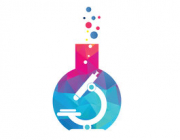Abstract:
This study is devoted to the estimation of total bioactive contents and the evaluation of acute toxicity and in vivo anti-inflammatory effects and the assessment of in vitro antioxidant and anti-arthritic potential of the species
Scabiosa stellata. The anti-arthritic activity was performed by bovine serum albumin denaturation method and the antioxidant activity was evaluated by eight different methods. Furthermore, the acute oral toxicity and the anti-inflammarory activity using the model of carrageenan-induced paw edema were tested on male Wistar rats. The ethyl acetate extract recorded the highest content of polyphenols, flavonoids and tannins. All the crude extracts (PE, EtAOc and
n-BuOH) had antioxidant activities in various assays and prevent the denaturation of bovin serum albumin in dose depending manner. The oral administration of the ethyl acetate extract at various concentrations (500, 1000 and 2000 mg/kg), does not induce any toxic symptoms or mortalities in all the treated animals. No significant changes in biochemical and hematological parameters compared to the control group were observed. Thus, the approximate acute lethal dose 50 of this extract was higher than 2000 mg/kg. In addition, the administration of ethyl acetate extract at doses of 50 and 75 mg/kg prevents a significant acute paw edema and present a higher anti-inflammatory activity than Diclofenac as a positive control.
Publisher's Version
